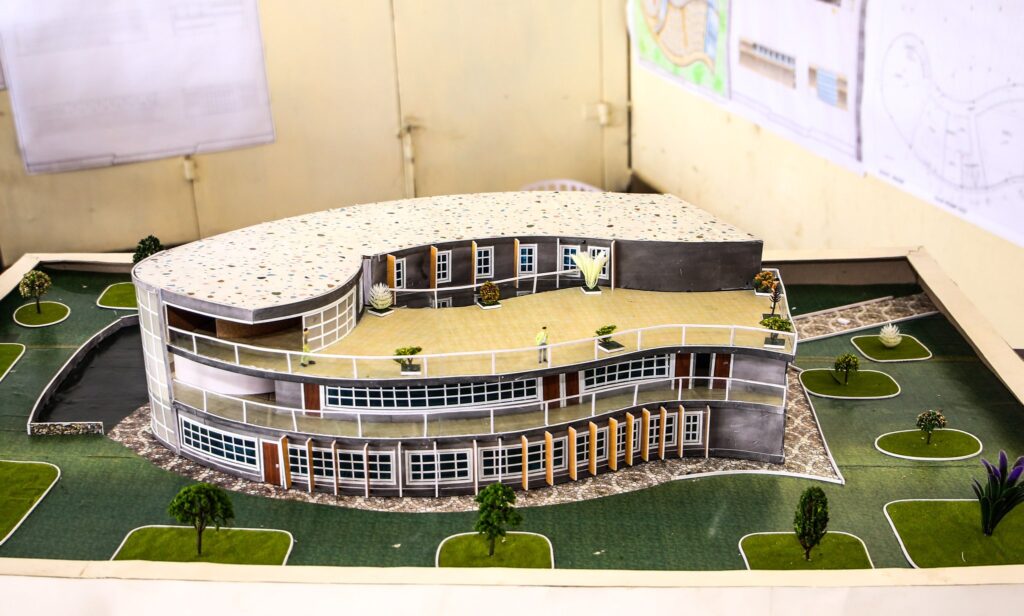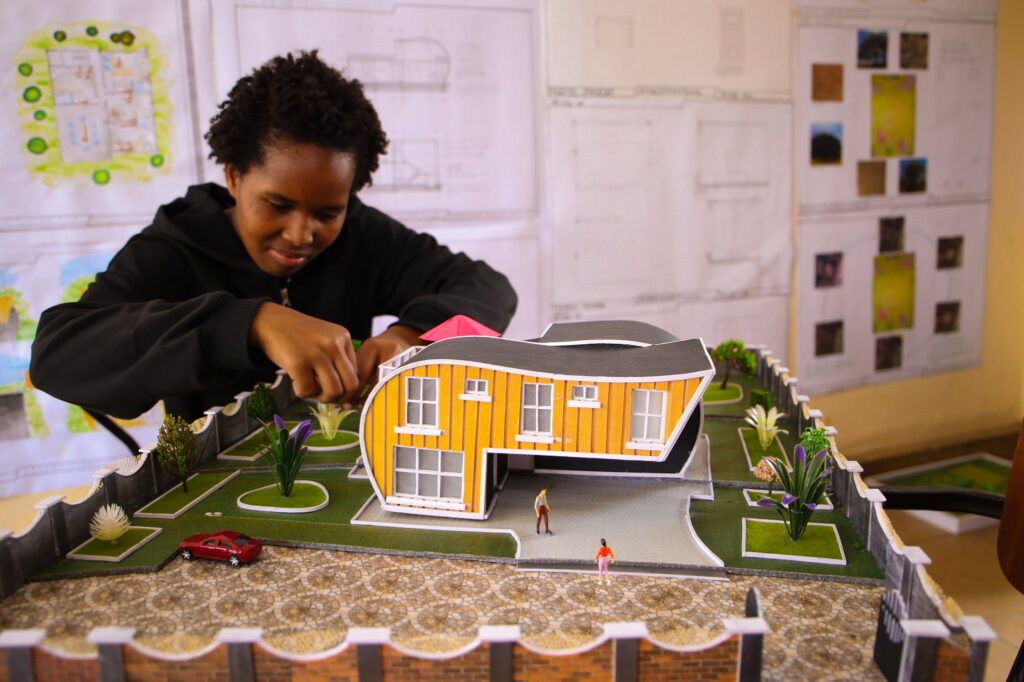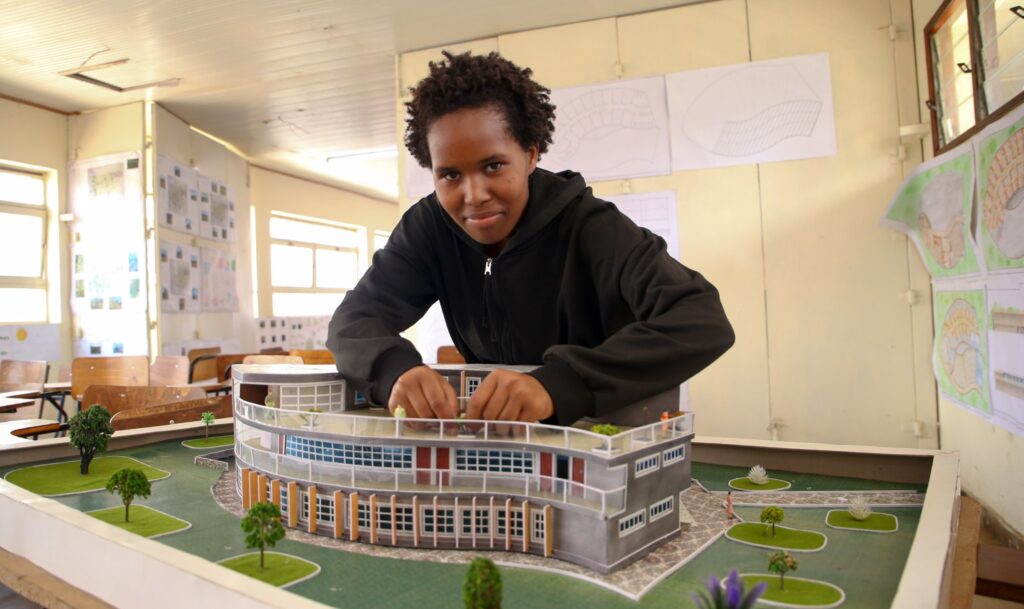Here we are unveiling the Architectural Vision of Tomorrow: A Look at Phoebe Ng’eno’s Design Models which are on the airwaves.
The field of architecture is a captivating blend of art and science, where creativity meets functionality to construct the spaces we live, work, and learn in.
Aspiring architects like Phoebe Ng’eno, a second-year Diploma in Technology Architecture student at the Technical University of Kenya (TUK), are leveraging their skills to envision and design structures that cater to the needs of modern society.
In addition, Ng’eno’s architectural prowess is evident in her meticulously crafted models of a maisonette and a TVET tuition block, showcasing her understanding of both aesthetics and functionality.
The Allure of the Maisonette with Phoebe Ng’eno’s Designs
The maisonette model in the image exemplifies modern residential design, with clean lines, geometric shapes, and a focus on maximizing space. Maisonettes are typically double-story units with their own private entrance, offering a unique blend of the privacy of a single-family home and the convenience of an apartment.
Moreover, Ng’eno’s design incorporates features that optimize the use of space, which is a major consideration in modern architecture. In especially in urban areas with limited land availability. Hence, Open floor plans, where walls are minimized to create a more spacious feel, are a common feature in contemporary residential design.

The use of large windows in the maisonette model allows for natural light to penetrate the interior, reducing the need for artificial lighting and creating a brighter and more inviting atmosphere. Natural light also has well-documented psychological benefits, promoting feelings of well-being and enhancing occupant productivity.
Sustainable Design Principles
Sustainability is a critical aspect of modern architecture, and Ng’eno’s maisonette model appears to incorporate elements that promote eco-friendly living. Large windows not only allow natural light to enter but can also facilitate natural ventilation, reducing reliance on air conditioning.
However, The use of sustainable building materials, such as locally-sourced wood or recycled elements, can also contribute to the environmental friendliness of a structure. Thus, Ng’eno’s design may also incorporate green roofing or rainwater harvesting systems, further emphasizing her commitment to sustainable practices.

A Glimpse into the Future of Education: The TVET Tuition Block
The TVET tuition block model in the image represents another facet of architectural design: the creation of functional and inspiring educational facilities. TVET stands for Technical and Vocational Education and Training, and these institutions provide students with career-oriented skills and knowledge.
The design of the TVET tuition block should inspire a love of learning and foster a collaborative environment. Ng’eno’s model hints at these qualities through the use of open spaces and strategically placed windows that introduce natural light.
Technological advancements are also transforming the educational landscape, and forward-thinking architectural design should take these into consideration. Spaces designed to integrate modern technology can enhance the learning experience for students and make the educational process more interactive and engaging.
Innovative Features in the TVET Tuition Block
Ng’eno’s TVET tuition block model showcases innovative features that cater to the needs of modern educational environments. The design likely includes flexible learning spaces that can be easily reconfigured for different teaching methods and group sizes. This adaptability is crucial in accommodating various educational activities and fostering a dynamic learning atmosphere.

Moreover, the model might incorporate state-of-the-art facilities such as smart classrooms equipped with the latest audiovisual technology, promoting an immersive and interactive learning experience. The inclusion of communal areas and breakout spaces encourages collaboration and teamwork among students, essential skills in today’s job market.
Conclusion: The Future of Architecture
Phoebe Ng’eno’s architectural models, the maisonette and the TVET tuition block, offer a glimpse into the future of architectural design. Her work demonstrates a keen understanding of the importance of aesthetics, functionality, and sustainability in the built environment. As Ng’eno continues to develop her skills, she is sure to make a significant contribution to the field of architecture.

Her designs are not only visually appealing but also incorporate innovative solutions to contemporary challenges, from sustainable living to adaptive educational environments. Aspiring architects and students can draw inspiration from Ng’eno’s models, which exemplify the potential of architecture to shape a better, more sustainable future.





